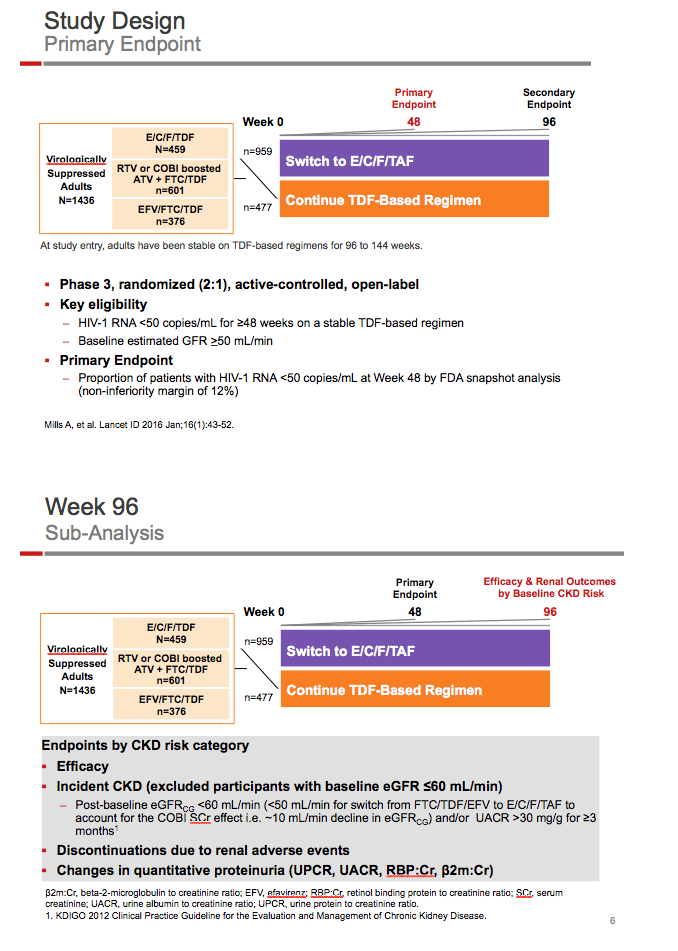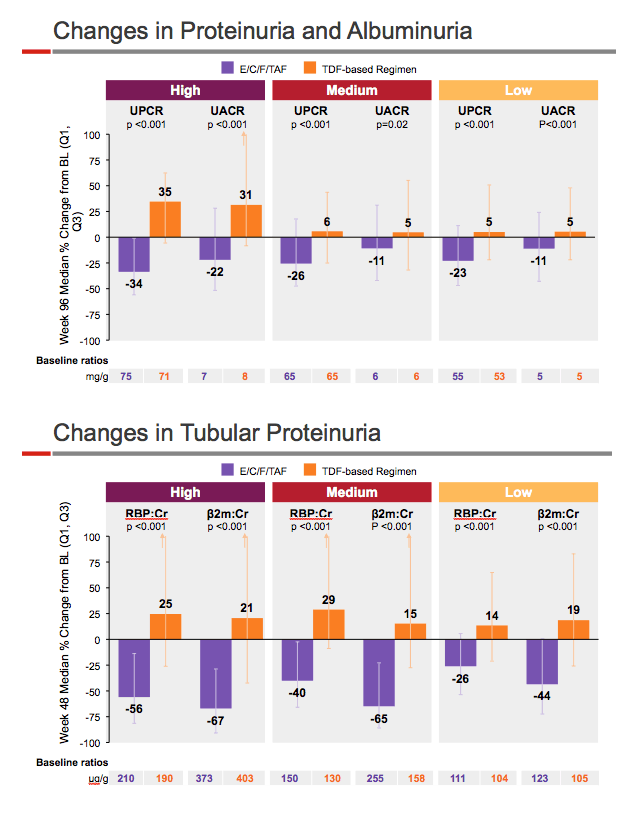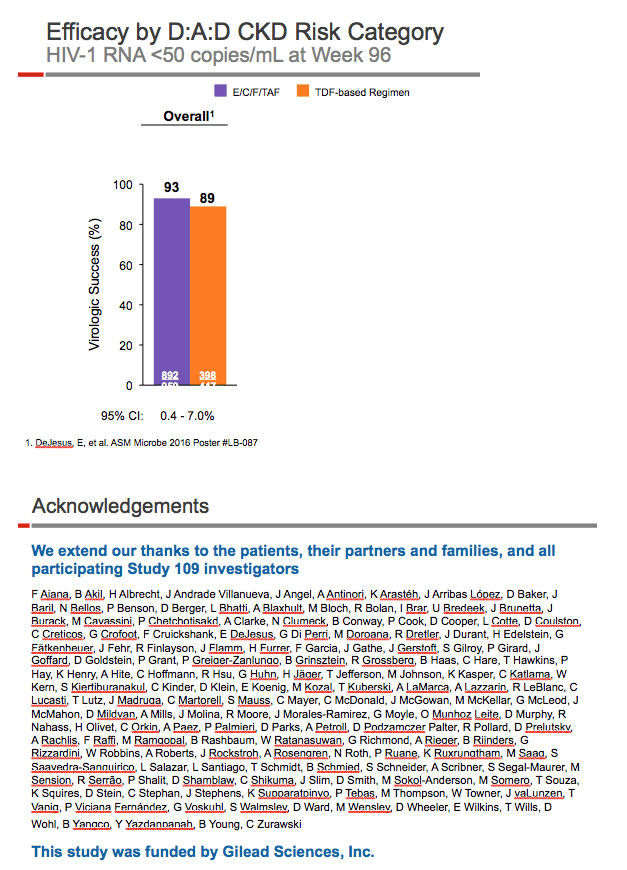| |
ASM/ICAAC: Switching from TDF to TAF
in Patients with High Risk for CKD
|
| |
| |
Study GS-US-292-0109
Reported by jules Levin
ASM/ICAAC 2016
June 16-20 Boston, MA
G. Huhn1, B. Rijnders2, M. Thompson3, P. Tebas4,
P. Shalit5, Y. Liu6, T. Nguyen-Cleary6, M. Das6, S. McCallister6
1The Ruth M. Rothstein CORE Ctr., Chicago, IL; 2Erasmus MC, Rotterdam, Netherlands; 3AIDS Res. Consortium of Atlanta, Atlanta, GA;
4Univ. Of Pennsylvania, Philadelphia, PA; 5Peter Shalit, MD, Seattle, WA;
6Gilead Sciences, Inc., Foster City, CA


Program abstract
Background: Due to a 91% reduction in plasma tenofovir levels, tenofovir alafenamide (TAF) compared to tenofovir disoproxil fumarate (TDF)-based regimens have significantly less impact on markers of renal and bone health in HIV patients. This analysis describes renal outcomes in patients at risk for chronic kidney disease (CKD) after switching from TDF to TAF.
Methods: In Study GS-US-292-0109, HIV suppressed adults on TDF regimens were randomized 2:1 to switch to single-tablet regimen elvitegravir, cobicistat, emtricitabine, TAF (E/C/F/TAF) or continue the TDF regimen. Renal outcomes included discontinuations due to renal adverse events (AEs), incident of eGFRCG <60 mL/min, and urine protein, albumin, retinol binding protein, and beta-2-microglobulin to creatinine ratios (UPCR, UACR, RBPCR, B2MCR) for groups with higher and lower risk for CKD. High risk was defined as ≥2 risk factors at baseline: female sex, age ≥50 years, Black race, any NSAID use, CD4 <200 cells/uL, dyslipidemia, HTN, DM, and clinical or subclinical renal AEs. Low risk was defined as ≤1 risk factor.





|
|
| |
| |
|
|
|